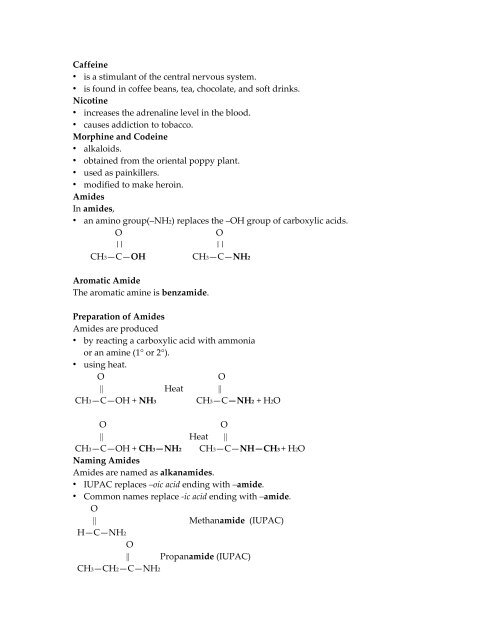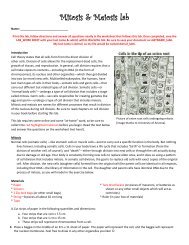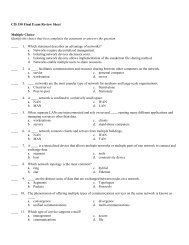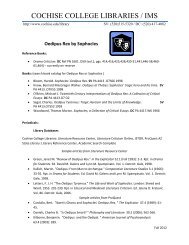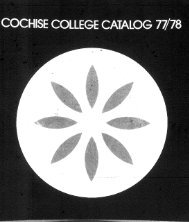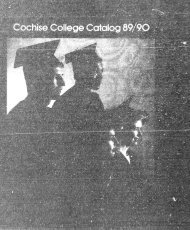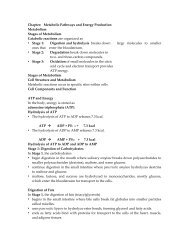Chapter 13 Carboxylic Acids, Esters, Amines, and Amides
Chapter 13 Carboxylic Acids, Esters, Amines, and Amides
Chapter 13 Carboxylic Acids, Esters, Amines, and Amides
- No tags were found...
You also want an ePaper? Increase the reach of your titles
YUMPU automatically turns print PDFs into web optimized ePapers that Google loves.
Caffeine• is a stimulant of the central nervous system.• is found in coffee beans, tea, chocolate, <strong>and</strong> soft drinks.Nicotine• increases the adrenaline level in the blood.• causes addiction to tobacco.Morphine <strong>and</strong> Codeine• alkaloids.• obtained from the oriental poppy plant.• used as painkillers.• modified to make heroin.<strong>Amides</strong>In amides,• an amino group(–NH2) replaces the –OH group of carboxylic acids.OO|| ||CH3—C—OHCH3—C—NH2Aromatic AmideThe aromatic amine is benzamide.Preparation of <strong>Amides</strong><strong>Amides</strong> are produced• by reacting a carboxylic acid with ammoniaor an amine (1° or 2°).• using heat.OO|| Heat ||CH3—C—OH + NH3 CH3—C—NH2 + H2OOO|| Heat ||CH3—C—OH + CH3—NH2 CH3—C—NH—CH3 + H2ONaming <strong>Amides</strong><strong>Amides</strong> are named as alkanamides.• IUPAC replaces –oic acid ending with –amide.• Common names replace ‐ic acid ending with –amide.O|| Methanamide (IUPAC)H—C—NH2O|| Propanamide (IUPAC)CH3—CH2—C—NH2


